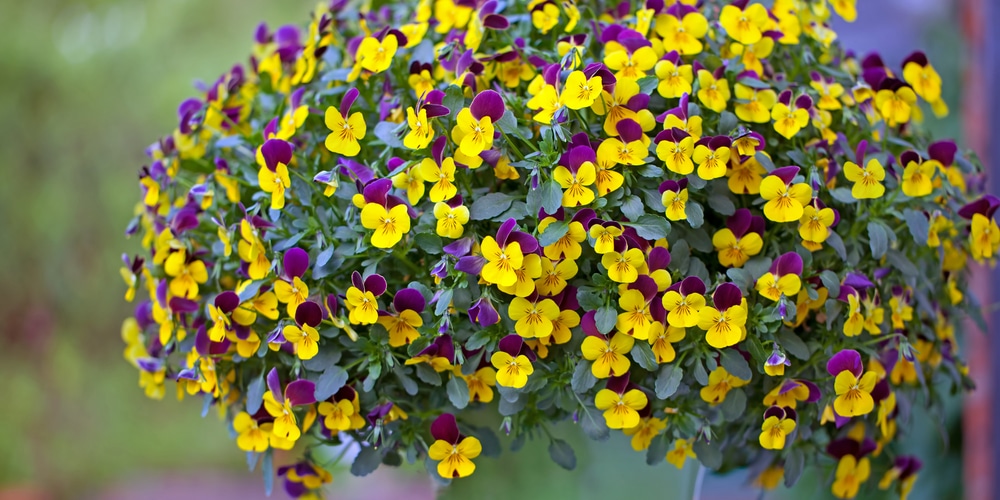Leggy pansies are a common sight in gardens and flower beds everywhere. Unfortunately, they often look spindly and unhealthy, which can detract from the garden’s overall appearance. This article will discuss why pansies become leggy and how you can trim them back to make them healthy and attractive again.
What to do with leggy pansies
Leggy plants are those that have long, thin stems with few leaves. This often makes them look unhealthy and unkempt.
There are a few reasons plants may become leggy, including insufficient light, too much heat, or poor nutrition. In most cases, leggy plants can be helped by simply trimming them back to encourage new growth.
What Causes Leggy Pansies?
Pansies can sometimes become leggy, with long stems and sparse foliage. There are several potential causes of this problem. One is that the plants are not getting enough light.
Pansies need at least six hours of sunlight per day, so if they are planted in a shady spot, they may become leggy in an attempt to reach for the light. Another possible cause is that the soil is too rich in nutrients.
This can cause the plant to produce more foliage than flowers, leading to a leggy appearance.
Finally, pansies may become leggy if they are overwatered. The plants like evenly moist soil, but too much water can cause the stems to stretch out in search of dryer conditions. By understanding the causes of leggy pansies, gardeners can take steps to prevent this problem.
How to Trim Leggy Pansies
Pansies are among the most popular spring flowers, known for their bright colors and cheerful faces. But if you let them go too long without trimming, they can start to look leggy and lackluster. Fortunately, it’s easy to get them back into shape with a little trim. Just follow these simple steps and your pansies will be looking beautiful in no time.
Deadheading
The first step is to remove any dead or dying leaves or stems. This process is called “deadheading.” Simply pinch off the dead leaves and stems at the base, being careful not to damage the healthy parts of the plant.
Trimming
Next, you will need to trim the leggy stems back to a more manageable length. Pansies can tolerate a fairly aggressive trim, so don’t be afraid to cut them back by a few inches.
Try to make all of your cuts at an angle, rather than straight across. This will help the plant recover more quickly and produce new growth more evenly.
Aftercare
Once you have trimmed your pansies, they will need extra care to help them recover. Be sure to water them deeply and regularly, as they will be working hard to produce new growth.
You may also want to fertilize them with a high-phosphorus fertilizer, encouraging blooming. Your pansies will soon look beautiful again with a little love and attention.
Best Time To Trim Pansies
Pansies are one of the hardiest flowers, withstand cold temperatures and even a little frost. However, they will still benefit from being trimmed back in late winter or early spring.
This will help them produce new growth and achieve a fuller, healthier appearance. So if your pansies are looking a bit leggy, don’t wait to trim them back. A little pruning will go a long way towards keeping them looking their best.
How To Keep Your Pansies Healthy
Even though they are low-maintenance, you still need to do a few things to keep your pansies healthy. Here are a few tips:
First, choose a sunny spot with well-drained soil. Pansies need at least six hours of sunlight each day, so a south-facing window is ideal. Second, keep an eye on the soil moisture levels and water regularly. Pansies prefer moist but not soggy soil, so be sure to check before watering.
One of the key things to remember when caring for pansies is to fertilize them regularly. A balanced fertilizer will help them grow strong and produce plenty of blooms. Just be sure not to overfertilize, as this can damage the roots and leaves. In general, once every two weeks should be sufficient.
Your pansies will thrive with a little care and provide you with beautiful blooms all spring long. So don’t be afraid to show them a little love. They’ll reward you tenfold.
What to do with leggy pansies: Conclusion
Leggy pansies are a common problem in gardens, but fortunately, they are easy to fix. Just trim back the stems and give the plants a little boost of nutrients and water. Your pansies will soon be looking as beautiful as ever with a little care.
Thanks for reading! We hope this article was helpful.
Related Article: Can I Plant Pansies in the Fall?


